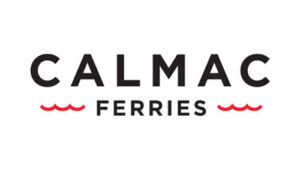Home » Case Studies »

CalMac Ferries Ltd. is a time-honoured transportation company based in Scotland. Its red-and-white ships, sailing under the Caledonian MacBrayne flag, are a familiar sight as they carry cargo and passengers to and from the islands off the west coast of Scotland. Besides providing a lifeline for the Inner and Outer Hebrides and nearby islands, the company is a travel and cultural resource for millions of visitors every year.
The challenge
In business since 1851, the company has embraced digital marketing and today uses email marketing to generate enquiries and bookings. The email team was interested in learning how to increase revenue from email, among other digital initiatives, and engaged Holistic Email Marketing to recommend changes. At the time, the company sent a simple welcome email to new subscribers and emailed subscribers with promotional offers and company content twice a month.
Our recommendation
Using what we had learned about CalMac and its customers from previous work and testing, we proposed that the company expand its email frequency from twice monthly to one weekly campaign. Although moving from two to four emails monthly would double the frequency, we believed it would not overwhelm customers’ inboxes or provoke a negative response.
The testing procedure
Because this change was tied to an ambitious revenue goal and more email sends, we set up a test to measure the impact of our frequency change before making a permanent change.
We followed a science-based methodology to set up, run and analyse our testing program to give us the most useful and reliable results:
We started with a hypothesis
“Sending twice as many campaigns in a period would result in increased revenue.”
This hypothesis guided all of the decisions we made in creating and running our tests and in analyzing the results. Without this hypothesis, we could not be sure that our test would return reliable and statistically significant results that we could use to make the change and realise improvements from it.
We set up our control and variant and established a study period and success metrics
Every test has a control – the current state – and a variant – a version that includes the change.
The control: Sending two messages a month to a randomly selected segment of subscribers.
The variant: Sending four messages monthly to another random subscriber segment.
The testing schedule: We ran the test for three months. This generated six campaigns for the control group and 12 for the variant. Then, we took the average for each of two success metrics.
Success metrics: We chose revenue and total transactions, as these business metrics match the strategic purpose of the test. We also tracked open, click and unsubscribe rates and the average number of transactions in the testing period.
Results and conclusion
Here are the results, which had a statistical significance of 99%:
- Average open rate: The control (two campaigns/month) won with a 4% uplift over the variant (four campaigns/monthly).
- Average click rate: The control won with a 16% uplift.
- Average campaign value: The control gained an additional 27%.
- Unsubscribes: Identical between the two groups.
- Average conversion rate: The control won with a 44% uplift.
- Revenue: The variant won with a 57% uplift.
- Total transactions: The variant won with an uplift of 74.79%.
These tests lead us to conclude, “Sending a weekly campaign will generate more revenue and bookings than sending only twice monthly.”
We have an awesome team of holistic email marketing consultants!
Stop guessing and start testing smarter. Our Holistic Testing Services go beyond traditional methods to give you strategies tailored to your unique audience and goals. Book a free 30-minute consultation now and let us help you take your email testing to the next level. See how we can help you today.

